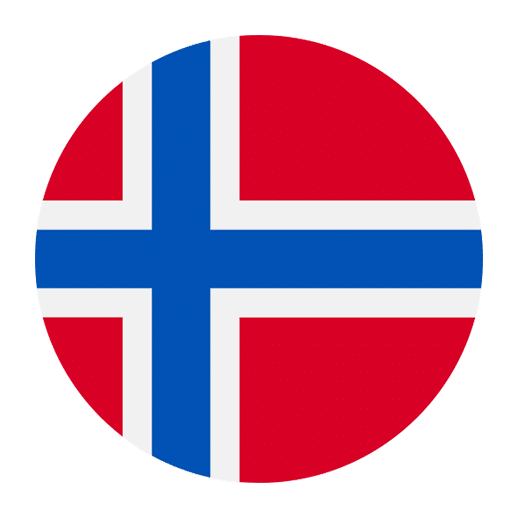Learning a new language can be an exciting journey, and mastering the nuances of expressing emotions is a significant step in becoming fluent. When it comes to Norwegian, a language rich in descriptive capability, understanding how to describe emotions both positively and negatively can greatly enhance your conversational skills. This article will guide you through the various ways to articulate your feelings in Norwegian, helping you to communicate more effectively and authentically.
Basic Vocabulary for Emotions
Before diving into the specifics of positive and negative emotions, it’s essential to build a foundation with some basic vocabulary. Here are a few fundamental words you should know:
– **Glad**: Happy
– **Trist**: Sad
– **Sint**: Angry
– **Redd**: Afraid
– **Overrasket**: Surprised
– **Bekymret**: Worried
– **Lettelse**: Relief
– **Forvirret**: Confused
These words will serve as the building blocks for more complex expressions of emotion.
Positive Emotions
Expressing positive emotions can make your conversations more engaging and pleasant. Here are some common positive emotions and how to describe them in Norwegian:
1. Happiness (Glede)
Happiness is one of the most frequently expressed emotions. In Norwegian, you can describe happiness in several ways:
– **Jeg er glad**: I am happy.
– **Jeg føler meg lykkelig**: I feel joyful.
– **Dette gjør meg glad**: This makes me happy.
2. Excitement (Spenning)
When you’re excited about something, you can use the following expressions:
– **Jeg er spent**: I am excited.
– **Dette er spennende**: This is exciting.
– **Jeg gleder meg til det**: I am looking forward to it.
3. Contentment (Tilfredshet)
Contentment is a state of being satisfied and at peace. Here are some ways to express it:
– **Jeg er fornøyd**: I am content.
– **Jeg føler meg tilfreds**: I feel satisfied.
– **Dette gir meg ro**: This gives me peace.
4. Love (Kjærlighet)
Describing love can be deeply personal. Here are some common phrases:
– **Jeg elsker deg**: I love you.
– **Jeg er forelsket**: I am in love.
– **Du betyr mye for meg**: You mean a lot to me.
5. Relief (Lettelse)
When you experience relief, you can express it with these phrases:
– **Jeg er lettet**: I am relieved.
– **Dette var en lettelse**: This was a relief.
– **Jeg føler meg fri**: I feel free.
Negative Emotions
Just as important as expressing positive emotions is the ability to articulate negative feelings. This allows for more honest and open communication. Here are some common negative emotions and how to describe them in Norwegian:
1. Sadness (Tristhet)
When you’re feeling sad, you can use the following expressions:
– **Jeg er trist**: I am sad.
– **Jeg føler meg nedfor**: I feel down.
– **Dette gjør meg trist**: This makes me sad.
2. Anger (Sinne)
Expressing anger can be tricky, but it’s an essential part of emotional expression:
– **Jeg er sint**: I am angry.
– **Dette gjør meg sint**: This makes me angry.
– **Jeg er rasende**: I am furious.
3. Fear (Frykt)**
Fear is a powerful emotion that can be expressed in several ways:
– **Jeg er redd**: I am afraid.
– **Dette skremmer meg**: This scares me.
– **Jeg føler meg utrygg**: I feel unsafe.
4. Disappointment (Skuffelse)
When things don’t go as expected, you might feel disappointed:
– **Jeg er skuffet**: I am disappointed.
– **Dette var skuffende**: This was disappointing.
– **Jeg forventet mer**: I expected more.
5. Confusion (Forvirring)
Confusion can be a common emotion, especially when learning a new language:
– **Jeg er forvirret**: I am confused.
– **Dette er forvirrende**: This is confusing.
– **Jeg forstår ikke**: I don’t understand.
Complex Emotions and Nuances
While basic emotions are essential, more complex emotions and nuanced expressions can convey your feelings more accurately. Here are a few examples:
1. Nostalgia (Nostalgi)
Nostalgia is a mixed feeling of happiness and sadness about past experiences:
– **Jeg føler meg nostalgisk**: I feel nostalgic.
– **Dette minner meg om gamle dager**: This reminds me of the old days.
– **Jeg savner det**: I miss it.
2. Ambivalence (Ambivalens)
Ambivalence is the state of having mixed feelings or contradictory ideas about something or someone:
– **Jeg er ambivalent**: I am ambivalent.
– **Jeg har blandede følelser**: I have mixed feelings.
– **Dette er både bra og dårlig**: This is both good and bad.
3. Empathy (Empati)
Empathy is the ability to understand and share the feelings of another:
– **Jeg føler med deg**: I feel for you.
– **Jeg forstår hvordan du har det**: I understand how you feel.
– **Jeg er empatisk**: I am empathetic.
Using Adjectives to Enhance Emotional Expression
Adjectives can add depth to your emotional expressions. Here are some adjectives that can enhance your descriptions of emotions:
1. Intensity
To express the intensity of an emotion, you can use adjectives like:
– **Veldig**: Very
– **Ekstremt**: Extremely
– **Utrolig**: Incredibly
For example:
– **Jeg er veldig glad**: I am very happy.
– **Jeg er ekstremt sint**: I am extremely angry.
– **Jeg er utrolig lettet**: I am incredibly relieved.
2. Duration
To describe the duration of an emotion, you can use adjectives like:
– **Kortvarig**: Short-lived
– **Langvarig**: Long-lasting
– **Forbigående**: Temporary
For example:
– **Dette er en kortvarig glede**: This is a short-lived joy.
– **Dette er en langvarig tristhet**: This is a long-lasting sadness.
– **Dette er en forbigående frykt**: This is a temporary fear.
3. Depth
To convey the depth of an emotion, you can use adjectives like:
– **Dyp**: Deep
– **Overfladisk**: Superficial
– **Inderlig**: Sincere
For example:
– **Jeg føler en dyp kjærlighet**: I feel a deep love.
– **Dette er en overfladisk lykke**: This is a superficial happiness.
– **Jeg har en inderlig bekymring**: I have a sincere concern.
Contextual Expressions
Sometimes, the context can change the meaning of an emotional expression. Here are some contextual expressions that can help you communicate more effectively:
1. Situational Context
The situation can significantly impact how you express your emotions:
– **Jeg er glad for at du er her**: I am happy that you are here.
– **Jeg er trist på grunn av nyhetene**: I am sad because of the news.
– **Jeg er sint på deg**: I am angry at you.
2. Social Context
The social context can also influence your emotional expressions:
– **Jeg er glad for å se deg**: I am happy to see you.
– **Jeg er skuffet over deg**: I am disappointed in you.
– **Jeg er redd for å si noe**: I am afraid to say something.
3. Cultural Context
Understanding the cultural context is crucial when expressing emotions in a different language:
– **I Norge er det vanlig å uttrykke følelser åpent**: In Norway, it is common to express emotions openly.
– **Nordmenn kan være reserverte i følelsesuttrykk**: Norwegians can be reserved in emotional expression.
– **Det er viktig å være ærlig om følelsene dine**: It is important to be honest about your feelings.
Practice and Application
The best way to master expressing emotions in Norwegian is through practice and real-life application. Here are some tips to help you practice:
1. Use Flashcards
Create flashcards with different emotions and their Norwegian translations. Practice regularly to build your vocabulary.
2. Watch Norwegian Media
Watch Norwegian movies, TV shows, and listen to Norwegian music to hear how native speakers express their emotions.
3. Speak with Native Speakers
Engage in conversations with native Norwegian speakers. Practicing with real people will help you understand the nuances of emotional expression.
4. Write in a Journal
Keep a journal where you describe your daily emotions in Norwegian. This will help you practice writing and reflecting on your feelings.
5. Role-Playing
Role-play different scenarios with a language partner or tutor. Practice expressing different emotions in various contexts.
Conclusion
Mastering the art of describing emotions positively and negatively in Norwegian can greatly enhance your language skills and deepen your connections with native speakers. By building a strong vocabulary, understanding the nuances of complex emotions, and practicing regularly, you can become more confident in expressing your feelings authentically. Remember, language learning is a journey, and the more you immerse yourself in the language, the more proficient you will become. So, embrace the process, and don’t be afraid to express your emotions in Norwegian.

